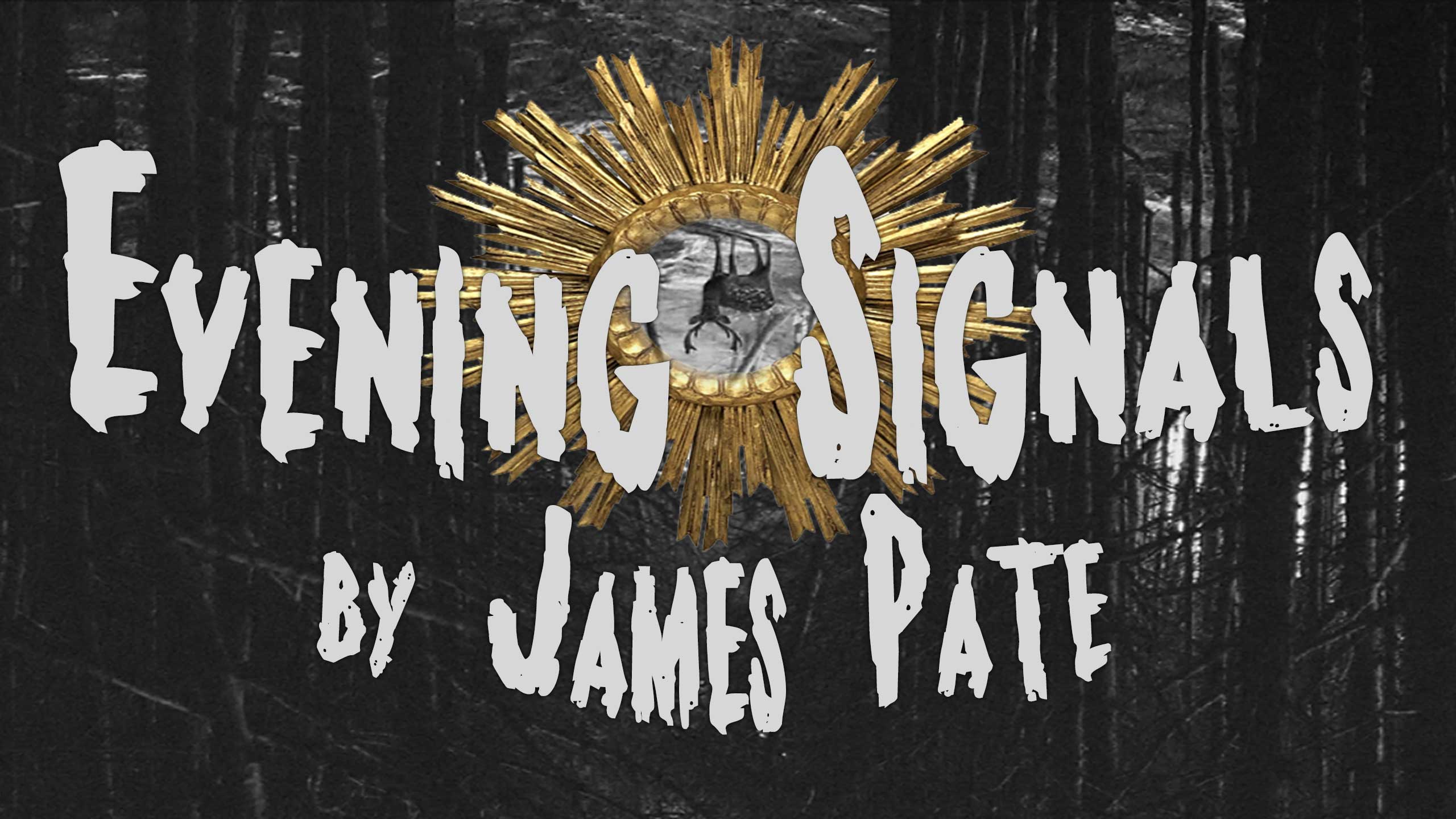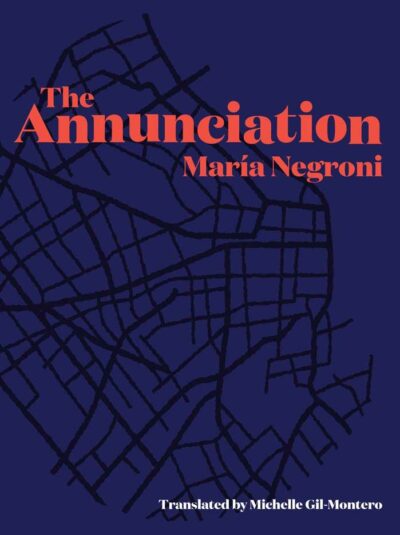Maria Negroni’s The Annunciation
Evening Signals is a monthly column by James Pate, exploring the Baroque, the Gothic, the Weird and the Fantastique in contemporary poetry and fiction. This month’s column reviews Maria Negroni’s The Annunciation.

Maria Negroni’s The Annunciation
Evening Signals is a monthly column by James Pate, exploring the Baroque, the Gothic, the Weird and the Fantastique in contemporary poetry and fiction. This month’s column reviews Maria Negroni’s The Annunciation.
Naming suffering, exalting it, dissecting it into its smallest components – that is doubtless a way to curb mourning.
– Julia Kristeva; trans. Leon Roudiez, Black Sun: Depression and Melancholia
Utopia as the absolute negation of that fully realized Absolute which our own system has attained cannot be imagined as lying ahead of us in historical time as an evolutionary or even a revolutionary possibility…It would be best, perhaps, to think of an alternate world – better to say the alternate world, our alternate world – as one contiguous with ours but without any connection or access to it. Then, from time to time, like a diseased eyeball in which disturbing flashes of light are perceived or like those baroque sunbursts in which rays from another world suddenly break into this one, we are remined that Utopia exists and that other systems, other spaces, are still possible.
– Fredric Jameson, Valences of the Dialectic
Ifirst heard of María Negroni’s work several years ago, when I picked up a copy of her book Dark Museum (translated by Michelle Gil-Montero), a collection of essays that explore the Gothic through works such as Horace Walpole’s The Castle of Otranto and the film Aliens, and celebrates the way the Gothic – with its emphasis on the strange and uncanny — suggests possibilities and freedoms that often get repressed by social norms. In hindsight, it’s a book that seems to subtly prefigure recent discussions of “acid communism” (Mark Fisher’s term) or “Occult Communism.” Unlike certain visions of emancipation that focus in on uniformity and authenticity, Negroni’s book foregrounds performance, multiplicity, and excess. She writes, “True, Gothic castles are, by definition, outmoded. But at the same time, and no doubt for that very reason, their architecture of excess houses the sutured dreams, shadowy ossuaries, that disclose the muffled zones of human experience, granting access to hallucinatory knowledge.”
One of the many threads of the collection is the idea that some of the central images of the Gothic, such as the castle and the labyrinth, emphasize the ineffable, the unknowable. “Reduced to a state of ruin, language no longer serves for communication but, instead, creeps much closer to (the territory of) the unknowable,” she argues. “Finally, in the house of meaning, the roof has flown off.” It is this element of the Gothic – its desire for a syntax/style of baroque entanglement as opposed to classical lucidity – that is taken up in her brilliant 2006 novel The Annunciation (which is also wonderfully translated by Gil-Montero, and published last year by Action Books).
In Negroni’s story, an unnamed narrator, currently residing in Rome, thinks back on her revolutionary past spent in Argentina, and especially on the years of the military junta and the execution of many left-wing activists. Living among the cafes, busy streets, and ruins of the Italian city, the narrator explores the traumas created by that earlier time, with a recurring motif being the execution of her lover, whose alias is Humboldt (we never get his actual name). The Annunciation could easily have been a somewhat straightforward, realist account of a time of political violence remembered in later years, and in a different country, with a somewhat hopeful ending for the narrator. In Negroni’s hands, however, the story becomes stranger, more experimental, more fragmented – a maze instead of an arc. And, unlike a more mainstream novel, this isn’t a novel of hard-won wisdom and gentle epiphany, but a work of mirrors and lists and fever dreams and manic monologues, with no sense of closure in sight. “I work at night,” the narrator says, and it shows, in the best possible way. Even the last word of the novel, “beyond,” highlights this openness, this mania.
The narrator is drawn in two directions during her revolutionary days – two directions given allegorical dimension by her lover Humboldt, the militant, and her friend Emma, the artist/mystic. Humboldt often resembles those young men in Godard’s films from the late 60s/early 70s who go on extended, impassioned monologues about class warfare and dialectical materialism. Negroni’s narrator even brings up this resemblance, at one point asking Humboldt if he has seen Godard’s La Chinoise, to which Humboldt answers, “No, I’m a Peronist. Keep in mind that revolution isn’t some drawing or embroidery or piece of literature, it’s an act of violence by which one class defeats another.” In contrast, Emma believes drawing is revolutionary. The title of Negroni’s book comes from Emma’s central project, which is to paint a modernized version of the Annunciation where the blue takes on ineffable qualities that evoke the ultimate Unknown. Emma explains, “I prefer art where everything, always, refers to something else (one blue to another blue, and that blue to another), so you can never quite frame it, you can never make it ‘official,’ like rain or a sunset can never be official.” For Emma, this aesthetic/spiritual philosophy has a radically liberative magnetism: “More than anything now, I want to step outside of the shelter of the law and the danger of opinion. I want my paintings to get emptier and emptier, to feed the fire that lights the world.” For Humboldt, the enemy is the upper-class; for Emma, the opponent is normalcy. Humboldt thinks in terms of the dialectic; Emma contemplates the world around her in terms of difference. 
The attraction the narrator feels towards both Humboldt and Emma is part of the structure of the novel itself. The entire story is addressed to Humboldt, as if it were an elaborate letter to her departed lover, but the title, as I mentioned above, comes from Emma’s primary artistic goal, suggesting that some of Emma’s aesthetic desires are the narrator’s as well. Humboldt haunts the novel with his absence, the narrator implying that he was executed during the military junta (though there are also implications throughout the story that Humboldt is made up, a specter in the narrator’s imagination, and a fictional stand-in for the all-too-real executions that did actually take place). And Humboldt’s fervor for revolution at times touches the narrator’s hope for a fundamentally transformed world where nothing of the old ways exist. But Emma’s distrust of totalization in all of its myriad forms is paramount in the Negroni’s work, and it’s hard to imagine Humboldt caring for a book that includes an otherworldly monk, a fantastical museum with a highly eccentric collection, and long debates between personified versions of Longing, The Unknown, and The Word House.
It’s tempting to read the narrator’s fascination with Emma and Humboldt as a fascination with a binary dynamic within herself, her personality being pulled between the poles of politics and art, belief and a distrust of systems, materialism and mysticism. In the mainstream Western tradition, with its emphasis on the binary, on the this or that, a choice cries out to be made. But Negroni’s protagonist refuses to definitively choose, and in that very act of refusal, suggests, implicitly, that maybe a deconstructive gesture could be played out between a two. A dance instead of a marriage. The narrator tells us near the end of the book, “Everything has yet to happen, repeats the sky, and I let you, Humboldt, and every one of the dreams that I embodied – the cities I lived in, the words I despised – dissolve into one vast luminous nothing, like the one heralded by the angles in Emma’s Annunciations, as sad and empty and outrageously beautiful as those laurels that we didn’t know how to win.”
Negroni’s book, like all Gothic writing, is a work of mourning drenched in Dickinson’s “Hour of Lead,” and its’s clear that Humboldt’s execution, for the narrator, is also symbolic of the execution of certain Utopian ideals. Yet, it’s not a defeatist novel. Or rather, it implies that new emancipatory perceptions, paradoxically, might rise from “the dark white night of defeat in Rome.” The last words of the story are about “the unbroken promise of dreaming, beyond Rome, Humboldt, beyond.” And it is with this “beyond” that the protagonist intertwines the militant and the mystic, materialism and masquerade.

About the Author
James Pate teaches creative writing, literature and philosophy at Shepherd University. His books include The Fassbinder Diaries (CCM, 2013), and Flowers Among the Carrion (Action Book Salvo Series, 2016). His work has appeared in 3:AM Magazine, Black Warrior Review, Burning House Press, Blue Mesa Review, Berkeley Fiction Review, and Occulum, among other places.